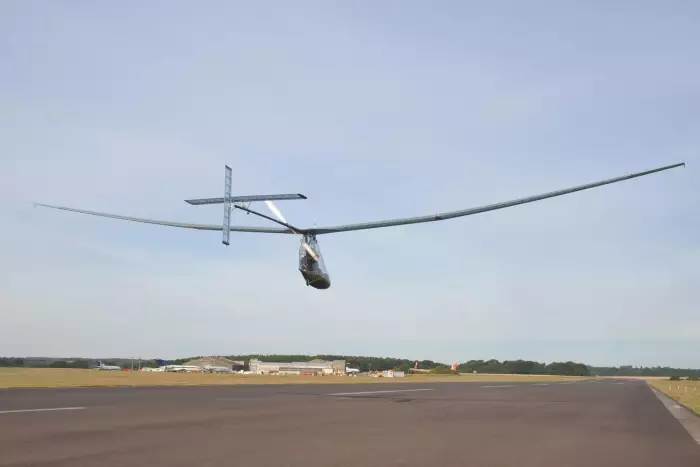Doing more with much less, British pilots at this year’s Icarus Cup follow in Paul MacCready’s aerial path, staging a highly successful weeklong demonstration of human-powered flight. Airplanes that fly on about a quarter-kilowatt for as long as the human battery can operate the pedals are not new, and significant records have been achieved over the years. The British have long been involved, beginning with the 590 meters flight by Derek Piggott on November 9, 1961 in SUMPAC (Southampton University’s Man Powered Aircraft – note the sexist terminology of the day). This was considered the first authenticated takeoff and flight by a human powerplant. He made 40 flights before suffering a crash that damaged a wing. To help foster interest in human-powered flight, The Royal Aeronautical Society formed the Man Powered Aircraft Group in 1959. Henry Kremer, an industrialist, set up the Kremer prize for a figure-of-eight flight around two markers half a mile (~0.8 Km) apart in 1959. It …
A New British Club for HPAs
For the last six decades, the Royal Aeronautical Society (RAeS) has overseen records keeping for human powered aircraft (HPAs). They report, “The Man Powered Aircraft Group of the Royal Aeronautical Society originated in 1959 when the members of the Man Powered Group of the College of Aeronautics at Cranfield were invited to become a group of the Society. Its title was changed from ‘Man’ to ‘Human’ in 1988 in recognition of the many successful flights by woman pilots.” Mr. Henry Kremer turned the wistful dreams of many to serious competition by donating over 275,000 pounds sterling ($440,000 at today’s exchange rates) in prize money for achievements such as flying a figure eight around to markers a half-mile apart and starting and finishing 10 feet above the ground – won by Paul MacCready, the airplane’s designer and Brian Allen, the pilot. The won their 50,000 pound prize on August 23, 1977, and scored a second win on June 12, 1979 by …
The Icarus Cup – As Green As It Gets
Dreams of human-powered flight go back at least to the myth of Daedelus and Icarus attempting to flee their Cretan prison by fashioning wings from feathers and wax. Your editor doesn’t know why we continue to name festivals of flight for Icarus, since he was the young, foolish soul who flew too close to the sun and melted his wings. His older, wiser father heeded his own advice and made the trip safely because he was not so bold. Maybe we use Icarus’ name out of respect for his sacrifice. In the spirit of the two mythical aviators and Leonardo daVinci, Italian designer Enea Bossi and builder Vittorio Bonomi oversaw several bungee-launched flights in 1936 with their spruce, balsa wood and light fabric covered Pedaliante. A 17-meter (55 feet) wingspan, twin propeller airplane, the 220-pound vehicle made as many as 40 flights, but the records are apparently hazy on their duration and distance under human power. World War II intervened …

